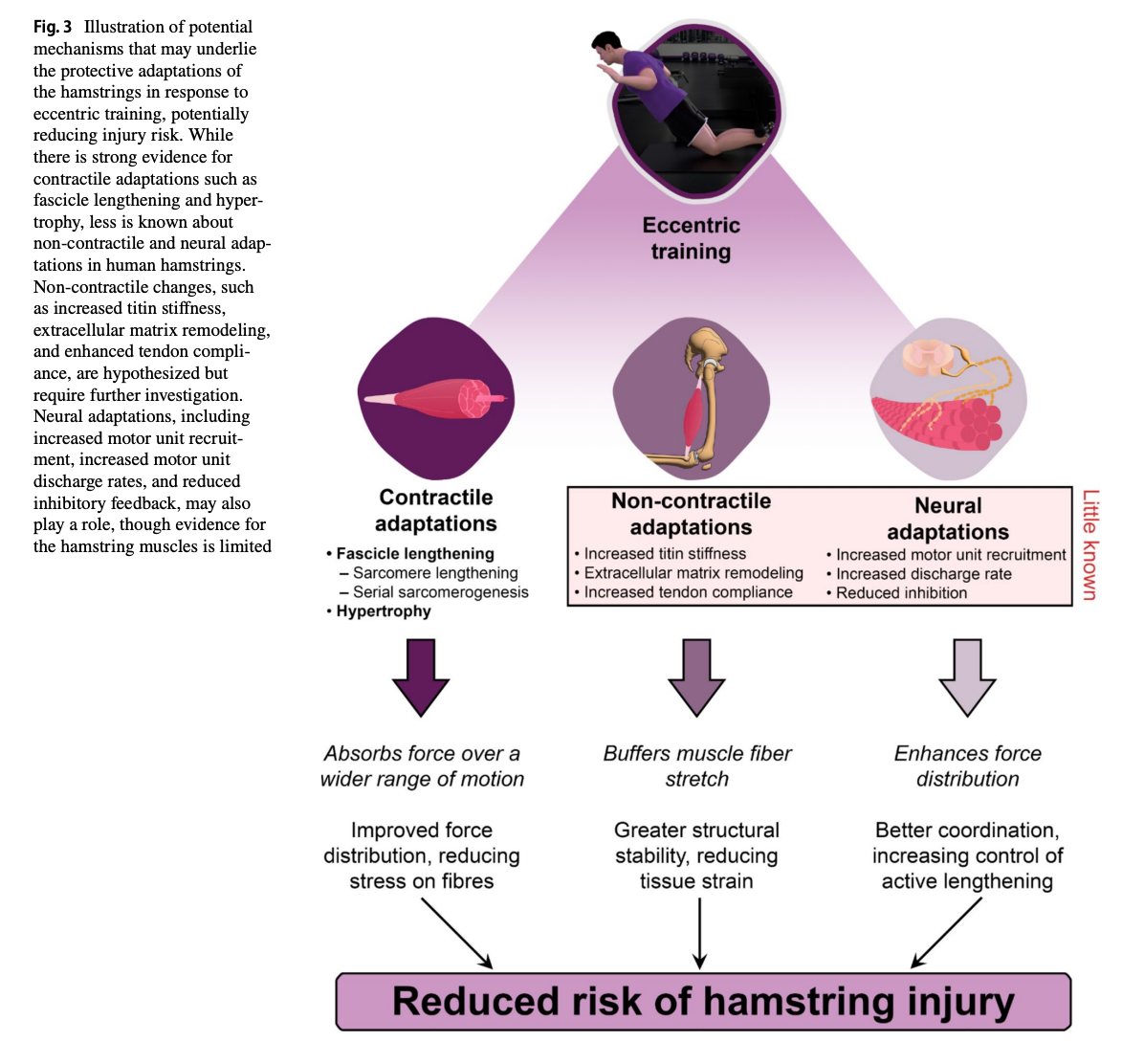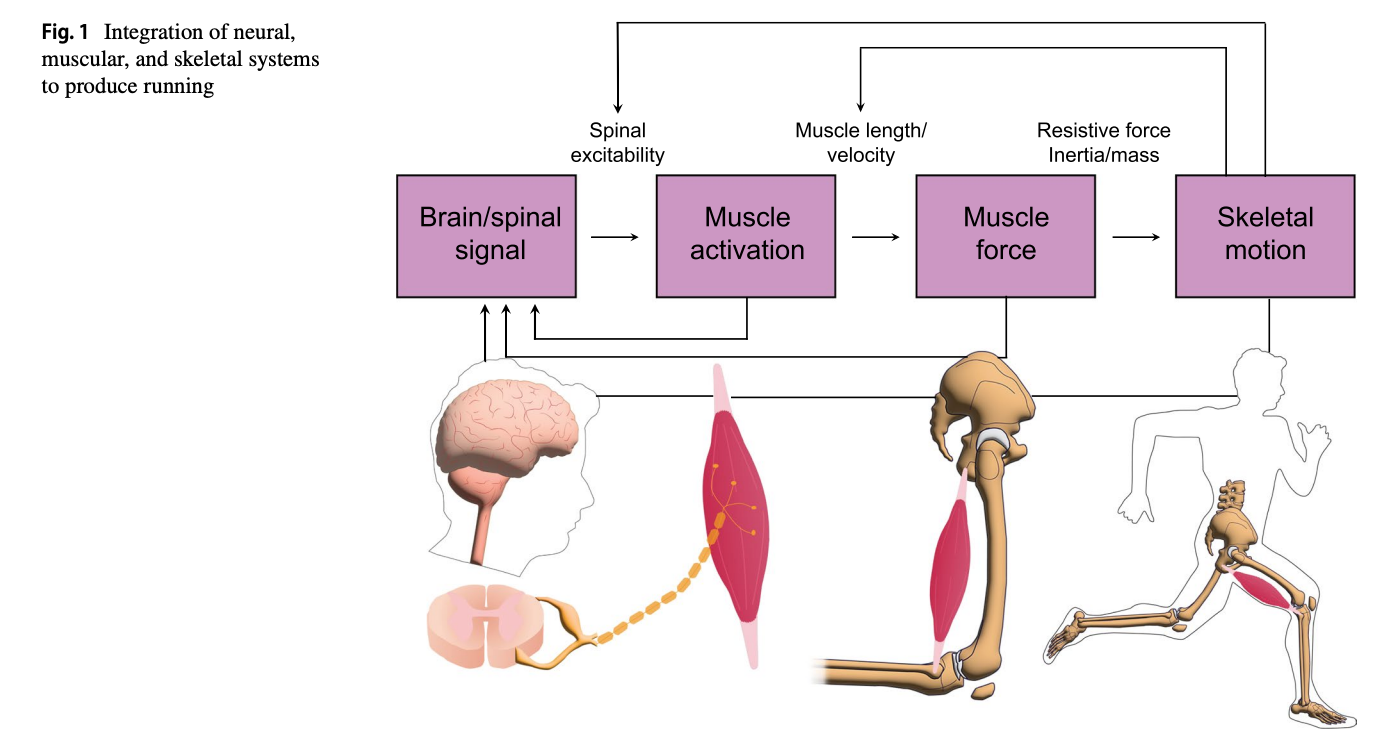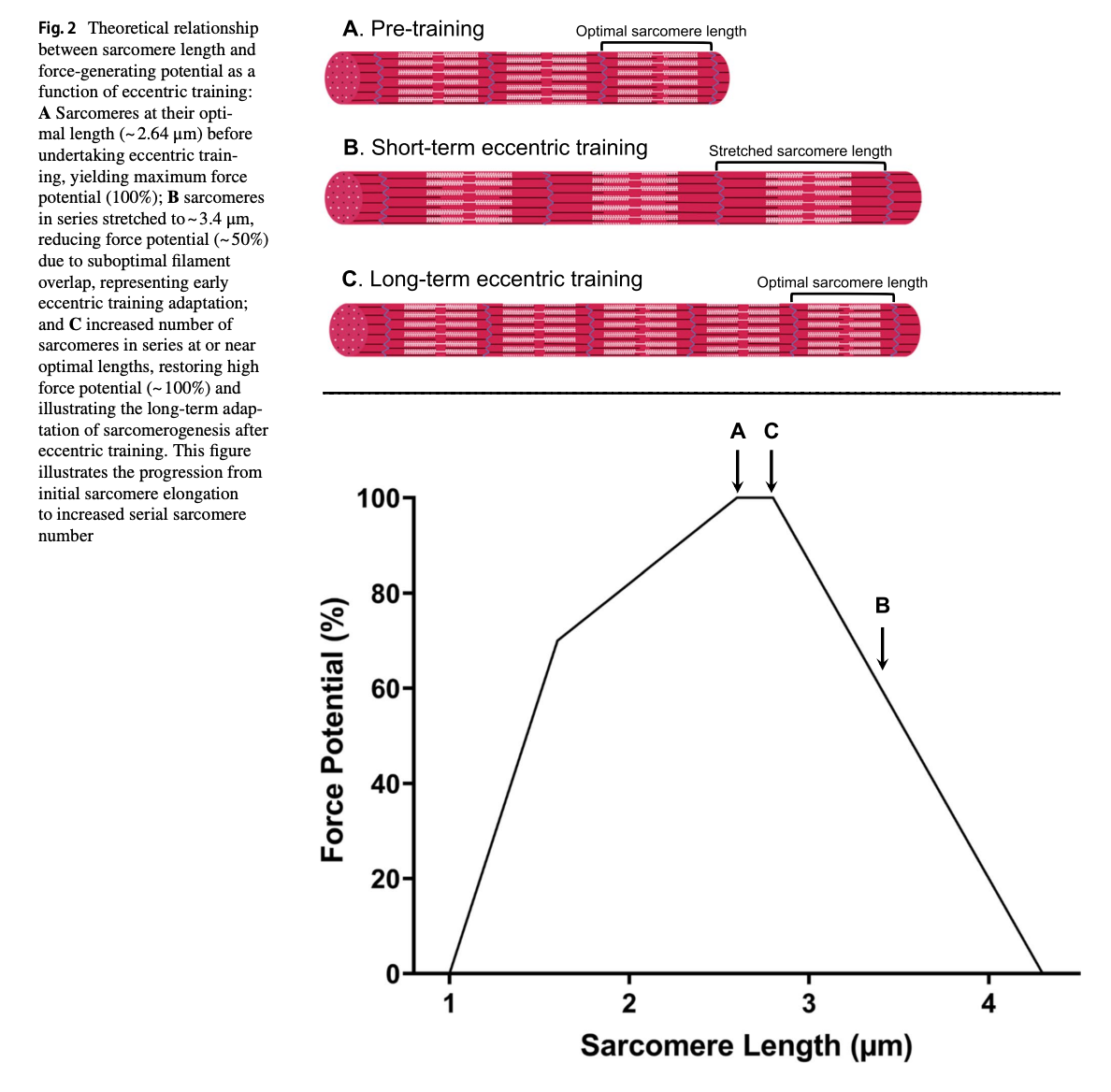Hamstring strains are common, costly, and stubbornly recurrent in running sports.
This brand narrative review examines the underlying causes of these injuries, the role of eccentrics in reducing their risk, and which adaptations are most significant.
The authors did a great job with this one and included some excellent graphics.
Let's dive in.
Master Performance Coaching & Elevate Your Career in Just 6 Weeks with a Global Community of Professionals
When and why do hamstrings fail during high-speed running, and which eccentric-driven adaptations lower that risk?

What Did the Researchers Do?
- Researchers searched PubMed and SPORTDiscus through May 2025 for mechanisms, prevention efficacy, and adaptations with emphasis on human hamstrings.
- They focused on late-swing vs early-stance mechanisms, eccentric programs such as the Nordic Hamstring Exercise (NHE), and adaptations across contractile, non-contractile, and neural domains.
- Pulled in modeling, imaging, and microendoscopy papers to connect fascicle behavior, sarcomere changes, and tissue/neural responses.

What were the results?
Mechanism
- Most strains occur in late swing when BFlh is at long lengths with high activation resisting forward leg momentum.
- Insufficient force or delayed activation raises strain risk.
Risk Factors
- Lower eccentric strength and shorter resting fascicle length associate with higher risk
- Prior injury is often linked to shorter fascicles.
Risk Reduction
- Programs including NHE show large risk reductions when adhered to;
- Poor compliance blunts the effect.
Contractile Adaptations
- Eccentrics increase resting fascicle length.
- Early weeks show increased sarcomere length; ~9 weeks suggests serial sarcomere addition (sarcomerogenesis), helping sarcomeres operate nearer optimal lengths at long positions.

Neural Adaptations
- Likely improvements in neural drive, motor unit behavior, and reduced inhibitory feedback could raise force capacity during lengthening. Direct hamstring evidence is sparse.
Non-Contractile Hypotheses
- The authors discussed the potential roles for ECM remodeling, titin stiffness, and tendon/aponeurosis behavior to buffer fiber stretch.
- Worth noting that evidence in hamstrings is limited and time-course matters.
What Does This Mean?
- Eccentric strength at long lengths addresses the late-swing problem: high force, long MTU, fast lengthening.
- Fascicle lengthening matters, but protection probably emerges from multiscale change: sarcomeres plus ECM/titin/tendon and neural control.
- NHE hits semitendinosus hard; hip-dominant long-length eccentrics likely stimulate BFlh hypertrophy and region-specific changes.
Limitations
- Many non-contractile and neural findings are extrapolated from other muscles or models; in vivo evidence of hamstring function during dynamic tasks is limited.
- Regional and task-dependent behavior of BFlh/SM/ST complicates the application of one-size-fits-all prescriptions.
Coach’s Takeaway
- Anchor prevention in eccentrics ⮕ load the hamstrings at long lengths and across both knee- and hip-dominant patterns.
- Progress dose and range ⮕ to allow early tissue remodeling without overload, then build strength and capacity.
- Test and target ⮕ Track eccentric strength, fascicle-length proxies, and asymmetries; adjust exercise selection to bias BFlh when needed.
I hope this helps,
Ramsey
Reference:
Andrews MH, Shield AJ, Lichtwark GA, Pincheira PA (2025). Hamstring Injury Mechanisms and Eccentric Training-Induced Muscle Adaptations: Current Insights and Future Directions. Sports Medicine.




